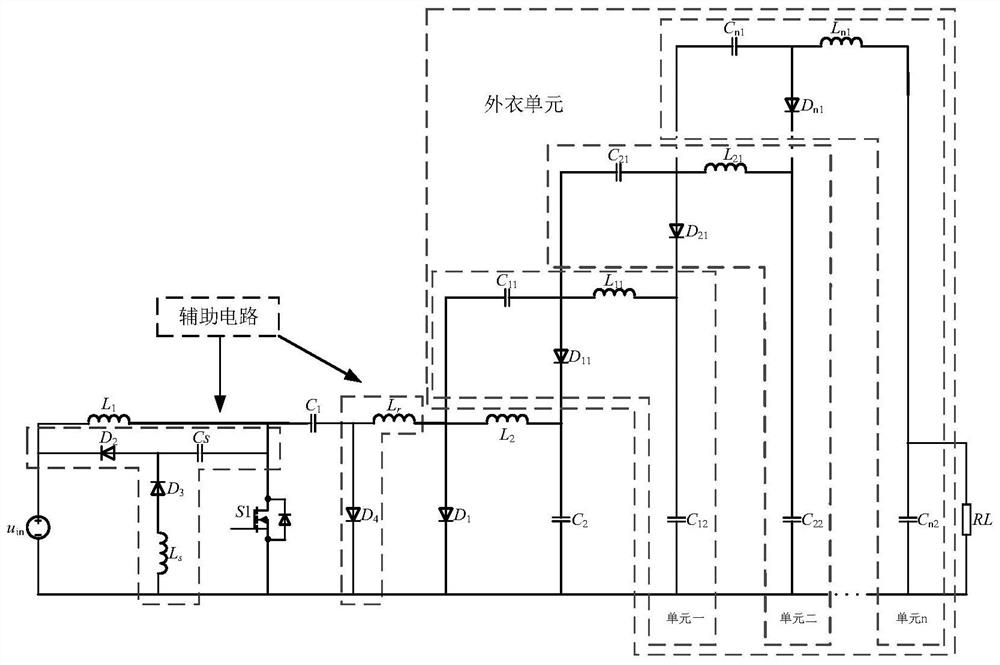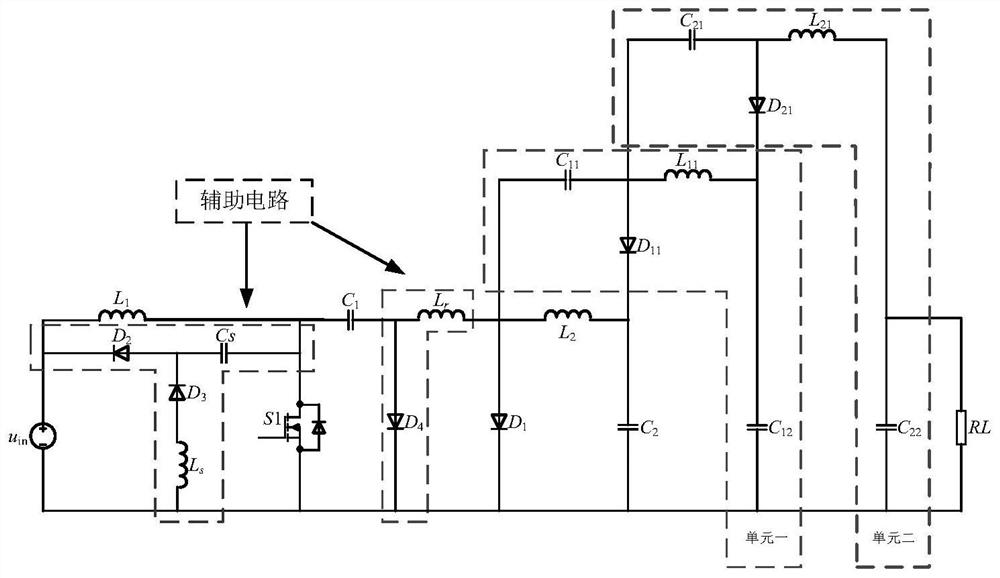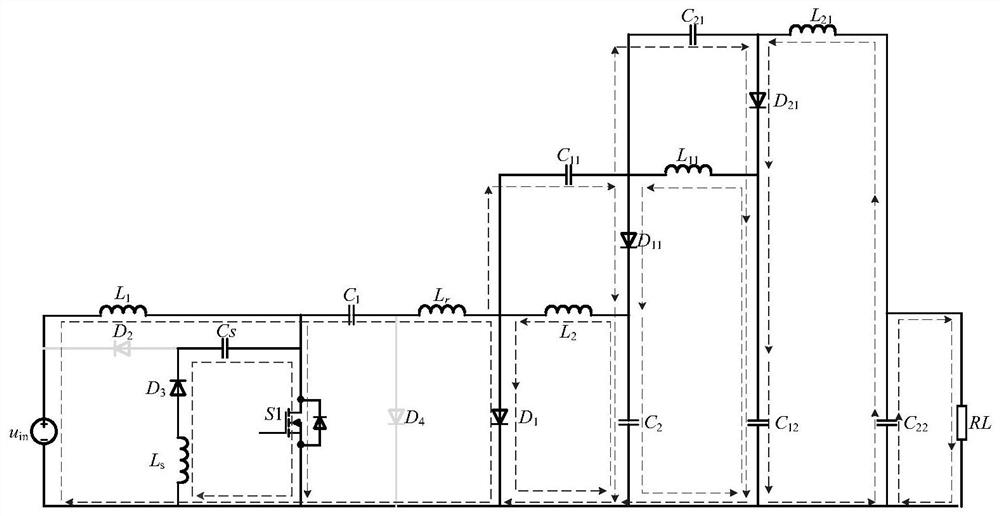Zero-voltage turn-off zero-current turn-on high-gain Cuk converter
A zero-voltage turn-off and zero-current technology, applied in the field of DC-DC converters, can solve the problems of increased switching loss, switching loss, waveform overshoot, etc., and achieve the goal of eliminating turn-on loss, eliminating turn-off loss, and reducing switching loss Effect
- Summary
- Abstract
- Description
- Claims
- Application Information
AI Technical Summary
Problems solved by technology
Method used
Image
Examples
Embodiment
[0087] Such as figure 2 As shown, taking two coat units as an example:
[0088] A zero-voltage turn-off zero-current turn-on high-gain Cuk converter includes a traditional Cuk converter, two coat units and an auxiliary circuit. Wherein, the traditional Cuk converter includes two inductors L1, L1, a power switch S1, a diode D1 and two capacitors C1, C2. The first garment unit contains an inductor L11, two capacitors C11, C12 and a diode D11. The second garment unit comprises an inductor L21, two capacitors C21, C22 and a diode D21. The auxiliary circuit part includes a zero-current inductor Lr, an auxiliary inductor Ls, a zero-voltage capacitor Cs, and three diodes D2, D3, and D4. Its circuit connection relationship is:
[0089] In a traditional Boost converter, one end of the inductor L1 is connected to the positive pole of the input power supply, the other end of the inductor L1 is connected to the drain of the power switch tube S1, and one end of the capacitor C1, the s...
PUM
 Login to View More
Login to View More Abstract
Description
Claims
Application Information
 Login to View More
Login to View More - R&D
- Intellectual Property
- Life Sciences
- Materials
- Tech Scout
- Unparalleled Data Quality
- Higher Quality Content
- 60% Fewer Hallucinations
Browse by: Latest US Patents, China's latest patents, Technical Efficacy Thesaurus, Application Domain, Technology Topic, Popular Technical Reports.
© 2025 PatSnap. All rights reserved.Legal|Privacy policy|Modern Slavery Act Transparency Statement|Sitemap|About US| Contact US: help@patsnap.com



